前言 這是一篇來自于 ACL 2022 的關于跨語言的 NER 蒸餾模型。主要的過程還是兩大塊:1)Teacher Model 的訓練;2)從 Teacher Model 蒸餾到 Student Model。采用了類似傳統的 Soft 蒸餾方式,其中利用了多任務的方式對 Teacher Model 進行訓練,一個任務是 NER 訓練的任務,另一個是計算句對的相似性任務。整體思路還是采用了序列標注的方法,也是一個不錯的 IDEA。
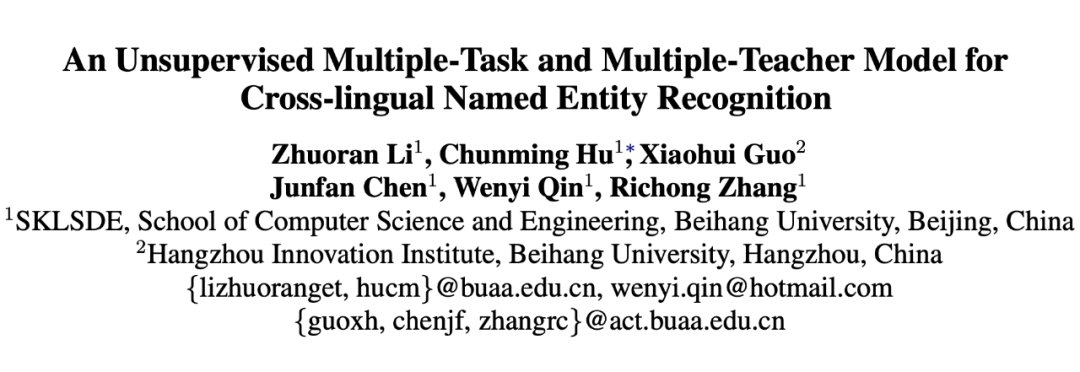
論文標題:
An Unsupervised Multiple-Task and Multiple-Teacher Model for Cross-lingual Named Entity Recognition
論文鏈接:
https://aclanthology.org/2022.acl-long.14.pdf
模型架構
2.1 Teacher Model
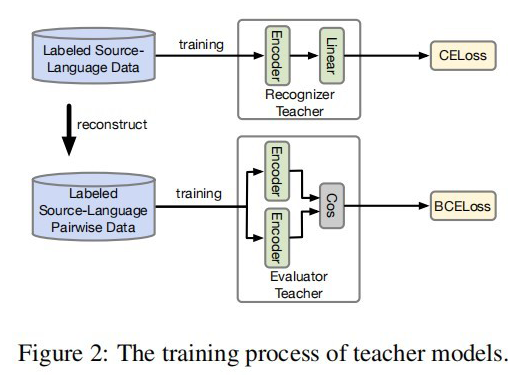



以上就是 Teacher Model 的第一個任務,直接對標注序列進行 NER,并且采用交叉熵損失函數作為 loss_function,計算如下:





2.2 Student Model Distilled
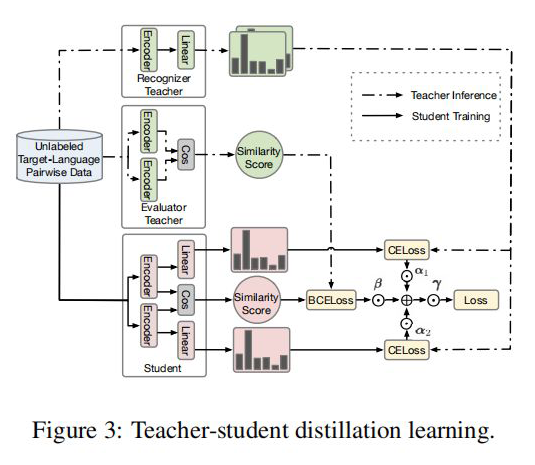


獲得兩個序列的hidden_state后進行一個線性計算,然后利用softmax進行歸一化,得到每個Token預測的標簽,計算如下:


這里也類似 Teacher Model 的計算方式,計算 target 序列間的Token相似度,計算如下所示:

當然,這里做的是蒸餾模型,所以對于輸入到 Student Model 的序列對,也是Teacher Model Inference 預測模型的輸入,通過 Teacher Model 的預測計算得到一個 teacher_ner_logits 和 teacher_similar_logits,將 teacher_ner_logits 分別與 和 通過 CrossEntropyLoss 來計算 TS_ _Loss 和 TS_ _Loss,teacher_similar_logits 與 通過 計算 Similar_Loss,最終將幾個 loss 進行相加作為 DistilldeLoss。
這里作者還對每個 TS_ _Loss,TS_ _Loss 分別賦予了權重 ,對 Similar_Loss 賦予了權重 ,對最終的 DistilldeLoss 賦予權重 ,這樣的權重賦予能夠使得 Student Model 從 Teacher Model 學習到的噪聲減少。最終的 Loss 計算如下所示:




這里的權重 筆者認為是用來控制 Student Model 學習傾向的參數,首先對于 來說,由于 Student Model 輸入的是 Unlabeled 數據,所以在進行蒸餾學習時,需要盡可能使得 Student Model 的輸出的 student_ner_logits 來對齊 Teacher Model 預測輸出的 teacher_ner_logits,由于不知道輸入的無標簽數據的數據分布,所以設置一個權重參數來對整個 Teacher Model 的預測標簽進行加權,將各個無標簽的輸入序列看作一個數據量較少的類別。這里可以參考 在進行數據標簽不平衡時使用權重系數對各個標簽進行加權的操作。而且作者也分析了, 參數是一個隨著 Teacher Model 輸出而遞增的一個參數。如下圖所示:




實驗結果
作者分別在 CoNLL 和 WiKiAnn 數據集上進行了實驗,數據使用量如下圖所示:
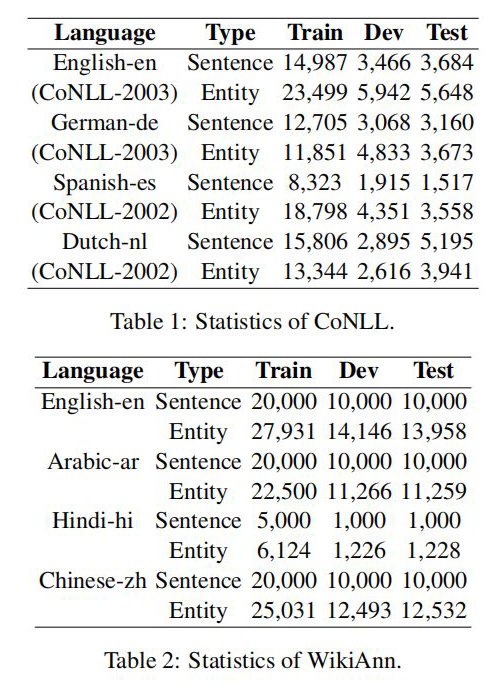
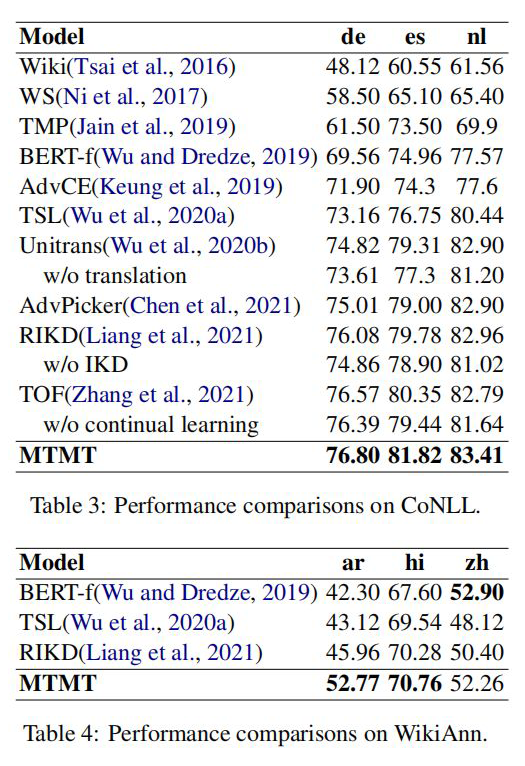
簡單代碼實現
#!/usr/bin/envpython
#-*-coding:utf-8-*-
#@Time:2022/5/3013:59
#@Author:SinGaln
"""
AnUnsupervisedMultiple-TaskandMultiple-TeacherModelforCross-lingualNamedEntityRecognition
"""
importtorch
importtorch.nnasnn
importtorch.nn.functionalasF
fromtransformersimportBertModel,BertPreTrainedModel,logging
logging.set_verbosity_error()
classTeacherNER(BertPreTrainedModel):
def__init__(self,config,num_labels):
"""
teacher模型是在標簽數據上訓練得到的,
主要分為三個encoder.
:paramconfig:
:paramnum_labels:
"""
super(TeacherNER,self).__init__(config)
self.config=config
self.num_labels=num_labels
self.mbert=BertModel(config=config)
self.fc=nn.Linear(config.hidden_size,num_labels)
defforward(self,batch_token_input_ids,batch_attention_mask,batch_token_type_ids,batch_labels,training=True,
batch_pair_input_ids=None,batch_pair_attention_mask=None,batch_pair_token_type_ids=None,
batch_t=None):
"""
:parambatch_token_input_ids:單句子token序列
:parambatch_attention_mask:單句子attention_mask
:parambatch_token_type_ids:單句子token_type_ids
:parambatch_pair_input_ids:句對token序列
:parambatch_pair_attention_mask:句對attention_mask
:parambatch_pair_token_type_ids:句對token_type_ids
"""
#RecognizerTeacher
single_output=self.mbert(input_ids=batch_token_input_ids,attention_mask=batch_attention_mask,
token_type_ids=batch_token_type_ids).last_hidden_state
single_output=F.softmax(self.fc(single_output),dim=-1)
#EvaluatorTeacher(類似雙塔模型)
pair_output1=self.mbert(input_ids=batch_pair_input_ids[0],attention_mask=batch_pair_attention_mask[0],
token_type_ids=batch_pair_token_type_ids[0]).last_hidden_state
pair_output2=self.mbert(input_ids=batch_pair_input_ids[1],attention_mask=batch_pair_attention_mask[1],
token_type_ids=batch_pair_token_type_ids[1]).last_hidden_state
pair_output=torch.sigmoid(torch.cosine_similarity(pair_output1,pair_output2,dim=-1))#計算兩個輸出的cosine相似度
iftraining:
#計算loss,訓練時采用平均loss作為模型最終的loss
loss1=F.cross_entropy(single_output.view(-1,self.num_labels),batch_labels.view(-1))
loss2=F.binary_cross_entropy(pair_output,batch_t.type(torch.float))
loss=loss1+loss2
returnsingle_output,loss
else:
returnsingle_output,pair_output
classStudentNER(BertPreTrainedModel):
def__init__(self,config,num_labels):
"""
student模型采用的也是一個雙塔結構
:paramconfig:mBert的配置文件
:paramnum_labels:標簽數量
"""
super(StudentNER,self).__init__(config)
self.config=config
self.num_labels=num_labels
self.mbert=BertModel(config=config)
self.fc1=nn.Linear(config.hidden_size,num_labels)
self.fc2=nn.Linear(config.hidden_size,num_labels)
defforward(self,batch_pair_input_ids,batch_pair_attention_mask,batch_pair_token_type_ids,batch_pair_labels,
teacher_logits,teacher_similar):
"""
:parambatch_pair_input_ids:句對token序列
:parambatch_pair_attention_mask:句對attention_mask
:parambatch_pair_token_type_ids:句對token_type_ids
"""
output1=self.mbert(input_ids=batch_pair_input_ids[0],attention_mask=batch_pair_attention_mask[0],
token_type_ids=batch_pair_token_type_ids[0]).last_hidden_state
output2=self.mbert(input_ids=batch_pair_input_ids[1],attention_mask=batch_pair_attention_mask[1],
token_type_ids=batch_pair_token_type_ids[1]).last_hidden_state
soft_output1,soft_output2=self.fc1(output1),self.fc2(output2)
soft_logits1,soft_logits2=F.softmax(soft_output1,dim=-1),F.softmax(soft_output2,dim=-1)
alpha1,alpha2=torch.square(torch.max(input=soft_logits1,dim=-1)[0]).mean(),torch.square(
torch.max(soft_logits2,dim=-1)[0]).mean()
output_similar=torch.sigmoid(torch.cosine_similarity(soft_output1,soft_output2,dim=-1))
soft_similar=torch.sigmoid(torch.cosine_similarity(soft_logits1,soft_logits2,dim=-1))
beta=torch.square(2*output_similar-1).mean()
gamma=1-torch.abs(soft_similar-output_similar).mean()
#計算蒸餾的loss
#teacherlogits與studentlogits1的loss
loss1=alpha1*(F.cross_entropy(soft_logits1,teacher_logits))
#teachersimilar與studentsimilar的loss
loss2=beta*(F.binary_cross_entropy(soft_similar,teacher_similar))
#teacherlogits與studentlogits2的loss
loss3=alpha2*(F.cross_entropy(soft_logits2,teacher_logits))
#finalloss
loss=gamma*(loss1+loss2+loss3).mean()
returnloss
if__name__=="__main__":
fromtransformersimportBertConfig
pretarin_path="./pytorch_mbert_model"
batch_pair1_input_ids=torch.randint(1,100,(2,128))
batch_pair1_attention_mask=torch.ones_like(batch_pair1_input_ids)
batch_pair1_token_type_ids=torch.zeros_like(batch_pair1_input_ids)
batch_labels1=torch.randint(1,10,(2,128))
batch_labels2=torch.randint(1,10,(2,128))
#t(對比兩個序列標簽,相同為1,不同為0)
batch_t=torch.as_tensor(batch_labels1.numpy()==batch_labels2.numpy()).float()
batch_pair2_input_ids=torch.randint(1,100,(2,128))
batch_pair2_attention_mask=torch.ones_like(batch_pair2_input_ids)
batch_pair2_token_type_ids=torch.zeros_like(batch_pair2_input_ids)
batch_all_input_ids,batch_all_attention_mask,batch_all_token_type_ids,batch_all_labels=[],[],[],[]
batch_all_labels.append(batch_labels1)
batch_all_labels.append(batch_labels2)
batch_all_input_ids.append(batch_pair1_input_ids)
batch_all_input_ids.append(batch_pair2_input_ids)
batch_all_attention_mask.append(batch_pair1_attention_mask)
batch_all_attention_mask.append(batch_pair2_attention_mask)
batch_all_token_type_ids.append(batch_pair1_token_type_ids)
batch_all_token_type_ids.append(batch_pair2_token_type_ids)
config=BertConfig.from_pretrained(pretarin_path)
#teacher模型訓練
teacher_model=TeacherNER.from_pretrained(pretarin_path,config=config,num_labels=10)
outputs,loss=teacher_model(batch_token_input_ids=batch_pair1_input_ids,
batch_attention_mask=batch_pair1_attention_mask,
batch_token_type_ids=batch_pair1_token_type_ids,batch_labels=batch_labels1,
batch_pair_input_ids=batch_all_input_ids,
batch_pair_attention_mask=batch_all_attention_mask,
batch_pair_token_type_ids=batch_all_token_type_ids,
training=True,batch_t=batch_t)
#student模型蒸餾
teacher_logits,teacher_similar=teacher_model(batch_token_input_ids=batch_pair1_input_ids,
batch_attention_mask=batch_pair1_attention_mask,
batch_token_type_ids=batch_pair1_token_type_ids,
batch_labels=batch_labels1,
batch_pair_input_ids=batch_all_input_ids,
batch_pair_attention_mask=batch_all_attention_mask,
batch_pair_token_type_ids=batch_all_token_type_ids,
training=False)
student_model=StudentNER.from_pretrained(pretarin_path,config=config,num_labels=10)
loss_all=student_model(batch_pair_input_ids=batch_all_input_ids,
batch_pair_attention_mask=batch_all_attention_mask,
batch_pair_token_type_ids=batch_all_token_type_ids,
batch_pair_labels=batch_all_labels,teacher_logits=teacher_logits,
teacher_similar=teacher_similar)
print(loss_all)
筆者自己實現的一部分代碼,可能不是原論文作者想表達的意思,讀者有疑問的話可以一起討論一下^~^。
審核編輯 :李倩
-
編碼器
+關注
關注
45文章
3785瀏覽量
137512 -
模型
+關注
關注
1文章
3501瀏覽量
50161 -
標簽
+關注
關注
0文章
146瀏覽量
18207
原文標題:ACL2022 | 跨語言命名實體識別:無監督多任務多教師蒸餾模型
文章出處:【微信號:zenRRan,微信公眾號:深度學習自然語言處理】歡迎添加關注!文章轉載請注明出處。
發布評論請先 登錄
自然語言基礎技術之命名實體識別相對全面的介紹

HanLP分詞命名實體提取詳解
基于結構化感知機的詞性標注與命名實體識別框架
基于神經網絡結構在命名實體識別中應用的分析與總結

深度學習:四種利用少量標注數據進行命名實體識別的方法
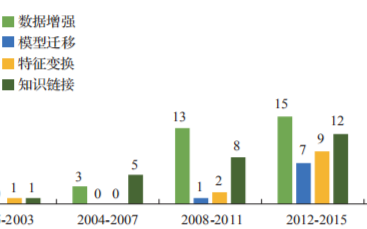
思必馳中文命名實體識別任務助力AI落地應用
新型中文旅游文本命名實體識別設計方案

知識圖譜與訓練模型相結合和命名實體識別的研究工作

基于字語言模型的中文命名實體識別系統






 跨語言命名實體識別:無監督多任務多教師蒸餾模型
跨語言命名實體識別:無監督多任務多教師蒸餾模型











評論